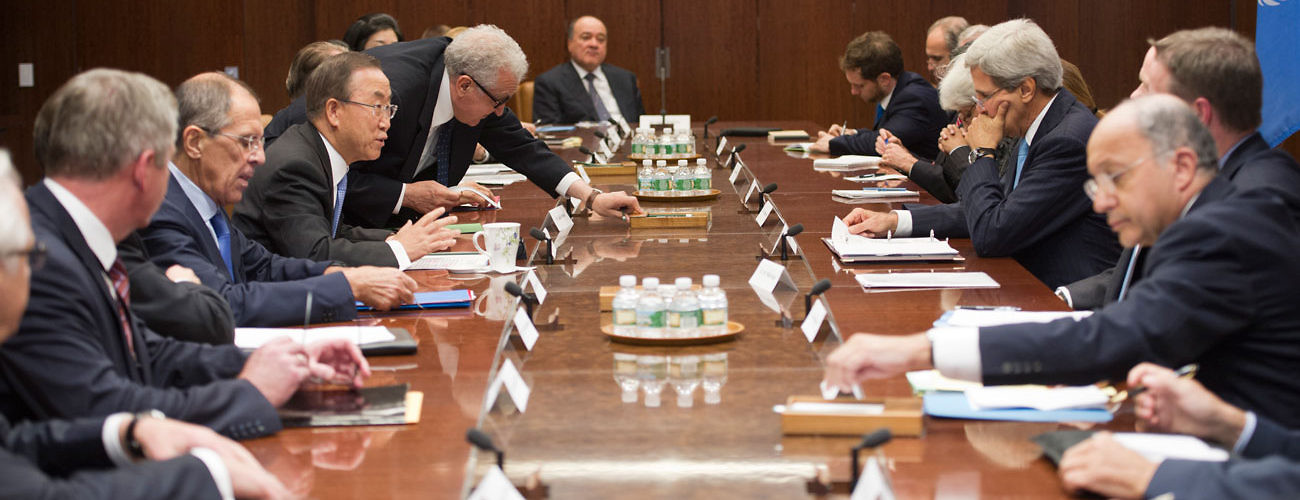Secretary-General Ban Ki-moon and Joint UN–Arab League Special Representative for Syria Lakhdar Brahimi meet with the five permanent members of the Security Council to discuss the second International Conference on Syria, United Nations, New York, September 27, 2013. UN Photo/Mark Garten.
The violence in the Middle East obfuscates the fact that there exists also a story of peace efforts across the region—a story of small successes, big frustrations, setbacks, and failures. Through these efforts, UN mediators have sought to achieve the often irreconcilable goals of ending violence while facilitating a political transition and reconciling the parties.
Building on the findings of papers previously published by IPI on UN mediation in Libya, Syria, and Yemen, this report draws crosscutting lessons for ongoing and future UN mediation in similarly complex and violent political transitions. These lessons are organized around five key challenges that mediators confront:
- Mandate: Much of the success or failure of a mediation depends on the mandate. While mediators do not necessarily need a clear mandate from the beginning, their success depends on unequivocal support from the Security Council at certain key stages of their mediation. This lack of clarity and the perception that the end result—political transition—was a precondition for negotiation frustrated the processes in Libya and Syria.
- Impartiality and inclusivity: It is neither possible nor always necessary for mediators to be completely impartial, but they must make proposals agreeable to the parties—a particular challenge during political transitions. Regarding inclusivity, every mediator is forced to make choices about who to include, and though any deficiencies generally involve leaving key actors out, sometimes a less inclusive process could have worked better.
- Entry and consent: Finding a favorable entry point—a moment when the conflict is “ripe” for resolution—is a challenge for mediators. While in Syria the UN is often faulted for being late to the conflict, the UN’s early entry in Libya did not improve the chances of mediation. The case of Yemen, however, demonstrates how early, low-profile engagement can help develop more favorable entry points.
- Strategy: Mediators face a dilemma in how to use cease-fires as conflict management tools; they can help build confidence among the parties, but they can also prolong the conflict by creating a tolerable stalemate. Cease-fires were only a minor part of the strategy of the mediators in all three countries. Greater emphasis on this mediation tool should be considered in future processes.
- Leverage: The greatest challenge UN mediators faced in leveraging power is that they represented a multilateral organization made up of many member states with competing agendas. But mediators who are UN insiders can also work the system in their favor. There are also other forms of leverage available to them, such as personal prestige and informational power.








